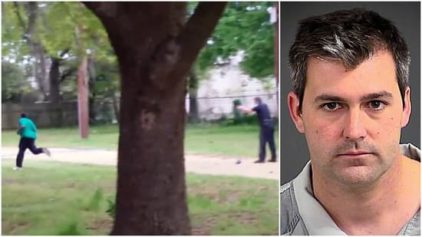
It is the glaring spotlight that illuminates the long ledger of Black people whose lives were snatched away by law enforcement officers who crafted wholly implausible scenarios to justify firing their guns.
Members of law enforcement have killed so many Black people in this country that the system has a long-established script to follow in these situations. The first words in the script are the officer’s declaration that “I feared for my life.” Those words begin the process of the system closing ranks to protect one of its own. Everyone knows their roles, from the police chief to the officer’s union delegate to the prosecutors to the judges. Rarely do we see one of them break ranks.
But the cellphone video has introduced a major blip in the well-oiled law enforcement machine. These videos have taken the control of the narrative out of the hands of the police and prosecutors and handed it to the public.
The Slager video is breathtaking in showing the coldly clinical manner that Slager, 33, aimed his weapon and killed Scott, 50, then methodically planted the Taser next to Scott’s body as he began constructing his lie. There was no sign of remorse, misgivings, concern. No effort to extend this man’s life with CPR or first aid. He applied handcuffs to Scott’s lifeless form and stood sentry over the body.
All the while, never aware that his theatrics were being captured on film. Now he sits in a jail cell, charged with murder.
It is hard to escape the probing question: How many Black people have been brutally and unnecessarily killed by cops who then fabricated a story to protect themselves?
“Far too often the police come up with the same narrative: I felt threatened, I felt afraid, the victim struggled with me, he reached for my gun,” attorney Benjamin Crump, who represented the family of Trayvon Martin, writes in Time. “This is the same old story from officers that shoot unarmed black men…This video was shocking to much of America, but for many of us it was a scene we have experienced so many times in our communities that we weren’t shocked at all. When I saw it, I imagined how many times evidence has been planted, how many times untrue stories have been given as official statements, to help justify the killing of innocent people of color.”
“Why are we still automatically accepting the police narrative?” Crump asks. “How many shocking videos of police misconduct do we need to show you, America, before you quit accepting the narrative?”
Indeed, while the video was spreading across the nation, federal prosecutors in New York were announcing that they didn’t have enough evidence to bring federal civil rights charges against the officer who killed the 20-year-old Pace University football player, Danroy Henry Jr., in 2010 outside a campus bar on Homecoming Day.
Officer Aaron Hess of the suburban Pleasantville, NY, police force shot Henry through the windshield of his car because he said Henry failed to stop when the officer suddenly stepped in front of the car. Henry was driving away from a disturbance that was occurring outside the bar. The officer said Henry’s car hit him, causing him to feel threatened and open fire. But there was no video of the incident—only witnesses who contradicted the officer’s account.
U.S. Attorney Preet Bharara said the evidence failed to establish the “exacting standard of criminal intent” required for criminal charges.
In Savannah, after 29-year-old Charles Smith was killed by police last September in the middle of the street in broad daylight while in custody and in handcuffs, the police came up with the story that Smith was armed.
According to Chadrick Mance, an attorney for the Smith family, witnesses estimated to be as close as 20 feet away gave him a far different narrative.
“They were saying that he had no gun and he was handcuffed and the officer asked him, ‘Are you ready to die?’ before he shot him,” Mance said during an interview with Atlanta Blackstar. “They were saying he was shot by two officers and we informed the media of that.”
Unfortunately, major media headlines made no mention of the reports of a second officer who may have also pulled the trigger on Smith.
There was no video, so the police were in control of the narrative.
In the case of Walter Scott, the man who recorded the video, Feidin Santana said he was about to hand the video over to the police—and even went to the police station to do so—then had second thoughts and left the station. Those second thoughts were no doubt informed by the avalanche of cases he’s heard in his relatively short life of police constructing false narrative to justify force.
In fact, Santana wisely waited to see what Slager’s story would be.
“He wanted to see what reports were coming from the North Charleston Police Department because of the fact that they may have told the truth,” Walter Scott’s brother told Time yesterday. “And when they continued with the lies, he said, ‘I have to come forward.’”
Santana told MSNBC’s Craig Melvin that he didn’t believe police would properly handle the video.
North Charleston Mayor Keith Summey has promised to outfit his entire force with body cameras in the wake of the shooting. But watching the clinical way that Slager went about covering his tracks and planting evidence, it’s not hard to imagine that he would have found a way for his body camera to suddenly experience a malfunction.
When the power to construct the narrative is in the hands of law enforcement, never will the final story be to the benefit of the Black man at the other end of the officer’s gun.



